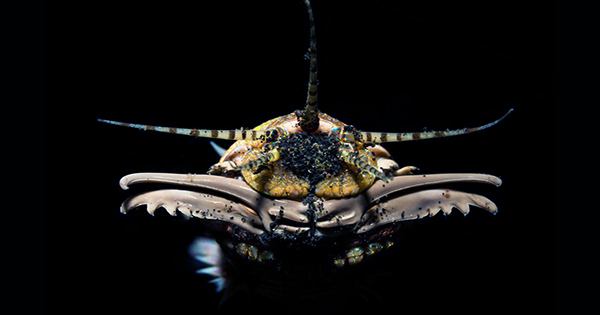Anyone familiar with Blue Planet II’s narrow Bobbit worm (Eunice aphroditois) sequence may think of the astonishing but naughty hunting skills of carnivorous worms like this alien.
Bound in a beautiful iridescence, Bobby hides most of his body in a long, slender old man inside the beach, which only shows its mouthpieces when it puts tabs on pedestrians. If an unhappy fish swims within the Bobbit range, they quickly fall off and are dragged down.
The dreamy fuel creature, described in a new study of eye-opening published in the journal Scientific Reports, details a possible ancestor of the Bobbit that once colonized the coast of the Eurasian continent about 20 million years ago.
The study found that Mycenae had an ocean floor across northeastern Taiwan with 319 specimens of large L-shaped aging. Using it, researcher Ludvig Löwemark, of the National Taiwan University, Taipei, and colleagues imagined a 2-meter (6.6-foot) trace fossil, about 3 centimeters (1 inch) wide. By looking at the physical structure of the aging nation from the evidence in the fossil record, researchers can use such trace fossils as a means of investigating the behavior of ancient animals.
Using this trace fossil, researchers were able to theorize the organism that once occupied it, which they named Pennichnus Formosa. They suggest it is probably a kind of giant, predatory marine worm, similar to the Bobbit worm found in our oceans today. The authors of the study believe that p. The specific way in which the old men of formosae have showed signs of decline may prove that these giant worms, like Bobbit, dragged their prey into their prey.
They decided to look closely at the aging specimens and analyzed and found that the aged had a high concentration of iron near the top. Using mucus to repair aging damage it can come from insects well. Among many animals this mucus is known as an attested feast for certain bacteria, which is known to contribute to the iron-rich marine environment. Big or small, marine worms are tricky customers for scientists who specialize in ancient species and specimens. Their bodies are mostly made up of soft tissue which makes it rarely in the fossil record and instead they must be p. Trace fossils, such as the formosae, should be studied from fossils that were created from ancient environmental sources.
While in the eyes of some it is not as sexy as the ancient, giant Tremors-esque death-worm specimens, these trace fossils provide valuable insights into life under the sand for sub-surface invading predators.
















